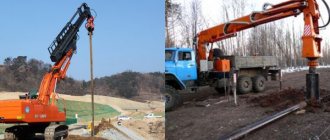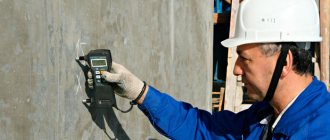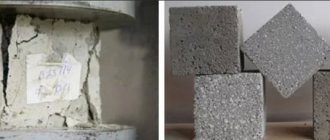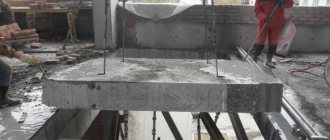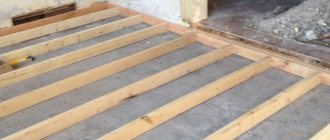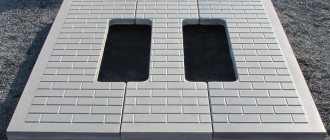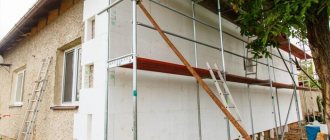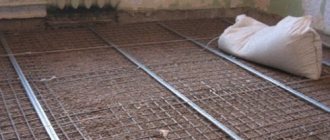In order to remodel and expand the space in an apartment or office, it is necessary to develop a plan according to which the walls will be dismantled in the future. Also, you need to make sure that the demolition work is, first of all, safe for the construction site and does not drag on indefinitely. And if to carry out work in old Khrushchev-era buildings, a simple sledgehammer and a jackhammer will be enough, then in modern buildings, which are built from harder and reinforced material, it is impossible to do without special diamond equipment.
Our work is based on:
- Training of highly qualified specialists;
- Availability of modern equipment;
- Information support for our clients;
- Flexible system of discounts;
- An integrated approach to the removal of dismantled wall fragments;
- Agreement, SRO!
All services provided are performed with modern equipment and highly qualified specialists! No matter how modern the equipment is, it must work in the hands of a professional. We have been in the professional dismantling market for 9 years!
Our prices
Dismantling of reinforced concrete structures:
- hydrocline and concrete breaker - from 15,000 rub. per m³
- wall saw - from 20,000 rub. per m³
- rope machine - from 30,000 rub. per m³
Cost of work with a manual diamond cutter:
| Wall thickness | Brick cutting per 1 meter | Concrete cutting in 1 linear meter |
| 10 cm. | 650 rub. | 950 rub. |
| 15 cm. | 850 rub. | 1450 rub. |
| 20 cm. | 1050 rub. | 1850 rub. |
| 25 cm. | 1600 rub. | 2500 rub. |
| 30 cm. | 2000 rub. | 3000 rub. |
| 35 cm. | 2200 rub. | 3450 rub. |
Cleaning after work and collecting water with a vacuum cleaner is free! Removal of construction waste - from 2000 rubles.
CHECKOUT
The exact cost of dismantling work must be calculated with the manager by phone:
+7 (499) 322-82-39
Stages
Before the destruction of durable material and structures made from it, preparatory work is always carried out. This is a rather long stage, which includes the following activities:
- visual inspection of the place where dismantling work will be carried out;
- coordination of work conditions;
- disconnection of utilities (if necessary);
- preparation of access roads to the dismantling site;
- installation of equipment.
At the end of the preparatory stage, disassembly work begins. They involve removing various structures and dividing them into smaller parts. If the monolithic parts of the structure are not suitable for further use, then they are crushed using special equipment, for example, a hydrocline.
Next, work is carried out to remove construction waste. The material is sorted, loaded onto transport and removed from the territory.
Strict adherence to the work plan is the key to successful dismantling of concrete structures. It is necessary to ensure the stability of the structure during disassembly and prevent premature destruction, as this is dangerous to the life and health of workers.
Dismantling brick walls
Brick walls are the strongest and most often are the load-bearing elements of a building, so when such a structure is dismantled, it is important to make the correct reinforcement in the form of a beam. This will help avoid any accidental damage and maintain the integrity of the structure.
Diamond equipment helps to dismantle brick walls most effectively, since it does not create much noise, works quickly and is inexpensive (prices are higher).
The professionals of our company will advise you on whether it is possible to demolish the wall, carry out all the preparatory work and deliver the completed order as soon as possible.
Methods of demolition and scrapping
Demolition of concrete buildings, as well as demolition of parts of the structure, should be carried out using a certain method that is most suitable for a particular object.
It is customary to distinguish several methods for dismantling reinforced concrete and monolithic structures:
- mechanical, (including semi-mechanical);
- electrohydraulic;
- explosive.
Let us conditionally divide all dismantling methods into:
- drums,
- unstressed.
The most inexpensive way to destroy a concrete structure is to break it manually
The first involves mechanical action on concrete.
These include:
- manual disassembly, carried out using a hammer drill, crowbar, sledgehammer, jackhammer;
- scrapping using various types of hydraulic equipment or an excavator;
- destruction of a building by a technological explosion.
In the second case, the destruction of the structure occurs under the influence of chemical reagents or other non-mechanical actions:
- corrosive mixtures;
- ultrasound waves.
As mentioned above, the most effective, as a rule, is to use several breaking methods at once. It is cheaper to dismantle concrete partitions manually, but breaking a monolithic foundation will require more powerful technologies.
On a note! To avoid transmission of vibration to adjacent parts of the structure, use sawing. Using a grinder, you should separate the monolith and break the reinforcement.
Manual disassembly
Manual dismantling of concrete structures is optimal in cases where a small volume is planned for demolition. In addition, in situations where it is not possible to transport equipment to the building, it is necessary to break it manually. Manual dismantling is a rather labor-intensive process and requires the use of personal protective equipment.
Using a hammer drill or jackhammer requires certain skills and considerable physical strength and endurance. At this time, manual demolition is the cheapest method.
The disadvantages of this method include the formation of large amounts of dust and debris during work. In addition, although disassembling large-volume structures manually is cheap, the time costs can cancel out all the financial benefits.
On a note! Manual demolition is ideal for creating new openings in concrete walls, in situations where careful and precise demolition is required.
Sawing boundaries for manual breaking of an opening in a concrete wall
Hydraulic engineering and excavator
If it is necessary to demolish a low-rise building or dismantle the foundation, then it is advisable to use hydraulic engineering or demolish parts using an excavator. In the latter case, a significant benefit is that the excavator bucket, while destroying the structure, immediately loads construction waste for removal.
The excavator can also be used in conjunction with a hydraulic hammer, which is a removable attachment mounted in the bucket area.
- The hydraulic hammer is connected to the hydraulic system. This method makes it possible to destroy underground concrete communications and complex monolithic structures, including supporting pillars of bridges.
- Another demolition option is to use a hydraulic wedge. The operating principle is based on a stretching mechanism.
- The wedge exerts an effect similar to pressure of several hundred tons. The low tensile strength of concrete ensures destruction from such an impact.
- The hydrocline is used as follows. A hole is drilled with a diamond drill into which the wedge is inserted. After this, the mechanism is put into action, and under the influence of overloads the concrete cracks.
Hydrorobot
Using this mechanism is the cleanest and most environmentally friendly way to dismantle a concrete structure. One hydraulic robot has the ability to destroy and remove up to 2.5 m3 of concrete per hour. To service this equipment, a couple of operators are required at the same time, while the robot itself is designed for round-the-clock operation.
The advantages of this demolition method include:
- maintaining the integrity of the reinforcing structure;
- absolute removal of concrete composition;
- the ability to work remotely;
- absence of noise and dust consequences of the activity;
- high efficiency.
Using a hydraulic robot, you can remove concrete only in some places
Please note: During the process of dismantling concrete using a hydraulic robot, the reinforcing belt not only remains intact, but is also cleaned of corrosion. At the same time, its settings allow for the dismantling of damaged areas while preserving high-quality areas unaffected by destruction processes.
The operation of such equipment eliminates the need to operate lifting mechanisms, because large fragments will not work during the demolition process.
Results of the hydraulic robot's work
On a note! One unit of such equipment is comparable in productivity to the work of a team of 25 people.
The use of hydraulic robots for dismantling concrete structures is most relevant when it is necessary to:
- reconstruction of a tunnel or road surface;
- repair or dismantling of part of a dam or nuclear power plant structure;
- clean dismantling of part of the supporting structure.
Detonation
The use of explosives to demolish concrete buildings is only possible in cases where there are no residential or operating buildings in the immediate vicinity.
- To carry out such work, a special permit is required.
- All activities are carried out in strict accordance with safety precautions only by professional specialists.
- This is one of the most expensive demolition methods. It is usually applied to monolithic buildings.
- Correct and accurate calculation of the amount of explosive and placement sites guarantees the result and pays off the costs.
- After a technological explosion, only small construction chips remain at the site of the building.
The photo shows the demolition of a building using a technical explosion
Dismantling concrete walls
Dismantling a concrete wall, for example, made of monolithic reinforced concrete, special reinforced concrete panels or concrete blocks, requires a special approach. Often load-bearing walls are made of this material, as it is strong and reliable, so their demolition requires extremely detailed preparation, obtaining the necessary permits from special authorities and careful work.
Diamond equipment is especially suitable for dismantling concrete walls, including load-bearing ones, with significant thickness (more than 60 cm) and reinforcement. This work is best done with the help of a wall saw, which copes well with such tasks.
Dismantling with percussion instruments
The impact method involves dismantling concrete structures using jackhammers. For large volumes of work, excavators with a hydraulic hammer are used. The impact force of jackhammers and hydraulic hammers reaches up to 63 J.
This method has become widespread due to the low cost of work and the ability to use jackhammers in any conditions.
Disadvantages of the method:
- the appearance of cracks;
- loud noise;
- increased dustiness.
Dismantling load-bearing walls
Load-bearing walls are an important element in the design of the entire building, so you should approach working with them extremely carefully and carefully. Such a wall supports everything that is above your apartment, so careless or incorrect dismantling of a load-bearing wall can lead to dire consequences. That is why, when dismantling a load-bearing wall, metal reinforcement is mandatory!
It is also worth remembering that before carrying out work you need to obtain special permission from the HOA, since the safety of all residents of the house depends on this. This service can be a great way to change the appearance of your apartment and increase your living space.
will professionally dismantle load-bearing walls if all permits are available, using special equipment that does not produce much noise and works very quickly. We strongly do not recommend performing this procedure yourself, as this is highly likely to lead to collapse and damage to the integrity of the building’s structure!
CHECKOUT
The procedure for dismantling ceilings
Before starting work on dismantling the old interfloor ceilings, the following are dismantled:
- Plumbing equipment and communications
- Electricity of the net
- Partitions, stoves and floors
Repair (strengthen) walls and lintels. The openings and channels used in the future are sealed.
And when dismantling the attic floors, they dismantle:
- Roof elements
- Horizontal hogs
- Furnace and ventilation pipes
In addition, an examination is carried out, during which the following is established: - the design of the floor (to determine the sequence and methods of work; - the degree of preservation of the floor elements (to identify weak points and, if necessary, take measures to fencing and strengthening them); - the reliability of the underlying floors (on case of collapse of dismantled overlying structures); - places for laying temporary flooring; - places for storing materials from dismantling.
ATTENTION! When dismantling floors (except for monolithic reinforced concrete ones), it is prohibited to throw materials from disassembly and debris (except for filing) onto the underlying floors to prevent the floors from collapsing!
Dismantling the ceiling consists of:
- From removing backfill (insulation)
- Showdown of rebounds (roll-up)
- Dismantling the ceiling lining and beams
When dismantling the floor, individual beams are replaced in compliance with the following rules:
- The backing is carefully cut out within two spans adjacent to the beam.
- The roll with lubricant and backfill is removed within two spans adjacent to the beam.
- The destroyed beam is removed and, if affected by house fungus, burned.
- To make it easier to lay a new beam, the nest in the second wall is expanded and deepened.
- Nests in the masonry are antiseptic.
- The removed parts of the knurling and the filing are carefully inspected to identify fungus and are antiseptic.
- The cross-sectional area of the beam is checked for compliance with the conditions of strength and rigidity (the moisture content of the material should not exceed 20%).
- The ends of the beam are antiseptic, wrapped with roofing felt and supported on the masonry.
- A temporarily deepened and widened nest in the masonry of the inner wall is carefully sealed with brick.
- The top of the beam is in close contact with the floor or floor joists.
- Rolling, lubrication, backfilling and filing after installation of the beam are restored.
- Deviation of the beam from the plane and ceiling lining is allowed no more than 2 mm.
Changing the roll in interfloor ceilings must be carried out taking into account the following requirements: dismantling must be carried out from the side of the underlying room from a specially constructed scaffolding; before laying a new runway, the technical condition of the beam, cranial bars and other adjacent structures must be examined; the new bevel should be laid in the form of panels or slabs of small width between two adjacent beams for subsequent laying of backfill and roofing felt; If it is not possible to lay backfill between the joists and the run-up, the floor structure of the upper floor must be opened.
When changing cranial bars, the structure of the runway span adjacent to the bar being replaced should be disassembled, and the surface of the beam adjacent to it should be inspected, cleaned of rot and antiseptic. To attach the beam, it is permissible to nail a leveling board to the beam. The strength of the beam with the remaining cross-sectional area must be confirmed by calculation.
The work is carried out from temporary scaffolding installed on the underlying floor.
Work to replace individual spans of wooden floors is carried out in compliance with the following requirements: - partitions, stoves and other structures resting on the floors are dismantled before the repair of the floor span begins; — all suitable material is selected for further use; — the backfill is collected separately, sifted and placed in a newly constructed ceiling; — timber affected by the fungus is burned, and the sifted waste from the backfill is taken to a landfill;
After dismantling, the floors are inspected: adjacent structures and places where beams are supported (sockets in the walls), purlins located in the lower floor, partitions, etc.
And where repairs are required, they carry them out.
